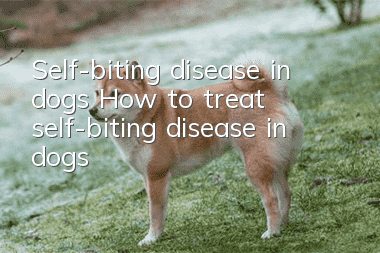Self-biting disease in dogs How to treat self-biting disease in dogs

What is canine autobitism?
This disease is characterized by dogs biting a certain part of the body (mostly biting the tail), causing skin damage. Severe self-biting can lead to death from secondary infection. The disease has no obvious seasonality, but the incidence rate is slightly higher in spring and autumn.Symptoms of canine self-biting
Some people think that it is caused by skin itching caused by nutritional deficiencies, infectious diseases, ectoparasites, or habitual self-biting caused by nervous dogs. bite. The affected dog bit the tip of its tail and ran in circles in the house, and barked "Ouch" from time to time, showing strong ferocity and aggression. The tip of the tail is hairless, damaged, bleeding, and scabbed. Some dogs bite the base of the tail, buttocks, or ventral side, leaving the coat incomplete. Some sick dogs bite off all the hair on their bodies.Treatment plan for dog self-biting
The treatment is based on the principles of sedation, anti-allergy, nutritional supplement, and prevention of secondary infectionTreatment method one: Sono (Amo Cilin-clavulanate potassium suspension). Dogs: 0.1 ml/kg, intramuscular
injection/subcutaneous injection, once a day.
Treatment method two: Baili (enrofloxacin) injection, 1 ml/kg, subcutaneous injection/intramuscular injection, once a day.
Random articles
- If a dog eats bones and ruptures its intestines, it will die within a few days.
- Dog's diarrhea looks like brown mud
- Can I use Yunnan Baiyao if my dog is lame?
- Is the blood in the dog's urine or stool serious or due to detoxification?
- Where to place the dog house can bring wealth. To remove yin and evil spirits, you must pay attention to the five elements numerology.
- What causes diarrhea in dogs? What dog owners must know about the five main culprits of diarrhea in dogs
- Changsha City organizes rabies prevention and control activities to increase awareness of dog license applications
- Pets that are clingy and clingy. One of these is bound to be your favorite.
- How many meals do dogs need to eat in a day? Big dogs and small dogs are different!
- Is it okay for dogs to sleep outside in autumn? It is better to let dogs sleep indoors in a warm place



